Collateral Light by Julia Cohen
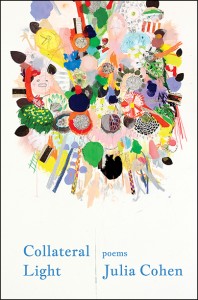 Collateral Light
Collateral Light
by Julia Cohen
Brooklyn Arts Press, Oct 2013
94 pages / $15.95 Buy from BAP or SPD
On the first page of “No One Told Me I Was the Arrow”, Julia Cohen writes:
a life
of sea-
sickness
dreaming of ships
An insect
on snow
At the limit
of our
body
a brief spasm
of laurels
Caught, sickness, limit, spasm. No one told her. In this, the first poem in Collateral Light‘s first section, Cohen seems to be setting forth an aesthetic program both in her subject matter and in the laconic precision of her style: To move over the frozen terrain of an aestheticized life, practicing an insect-like lightness and thereby avoiding falling into the ‘snow’. This is not, in itself, an unadmirable pursuit. It is also one to which poetry is particularly well-adapted–is there any medium more capable of lambently exploring ‘the limit/of our/body’ without becoming mired? And yet perhaps I can be forgiven that my heart dipped in my chest at the prospect of another book devoted to elegies on the subject of inability and asymptotes. It therefore came as both a surprise and a relief when Cohen discards her regretful tone at the poem’s conclusion:
my point
plunge
into a glass
of soil
“An insect/on snow” nothing, O me of little faith. Cohen is ready and able to dive within. In Collateral Light, we have the pleasure of going with her.
Over course of the poems following this introduction, Cohen delivers on the promise vested in the conclusion of “No One Told Me I Was The Arrow”. Her writing revolves around shifts, mutations, permanence, lability. Certain terms recur with such regularity that they become fraught, even overloaded, with meaning. Arrows (those symbols of both indication and entry) appear again and again, both negatively (“My pixels/deflect arrows”) and positively (“I’m filled/with invisible arrows”). Coats, husks and shells are shedded or pierced, disrupting the boundaries between the within and without of a given person (as when she writes, “Kiss my puppy lips my deer lips/the animal inside that animal/alive & yelping through the skin”). The introduction or relaxation of this confusion is at the center of many of Cohen’s more arresting passages, such as in the eponymous poem’s opening lines:
inside your face
& look down
at the sunken garden
My toes are cute
My packet of
bees comes in
Spreading whiteness, imperfect memory, gardens (be they sunken, frozen, night-, or made up of “Fake flowers burst forth from fake seeds”), ice, frost, veins, circulation and filtration. The throughlines multiply without compromising the slow, considered style. Cohen knows how to play to the strengths of that style; this is perhaps best-displayed by the particularly wonderful “The Decoy Museum Is Still”, in which sparse lines such as, “You walk into a stranger’s dirty pocket of air,” seize attention through their quiet profundity.
Cohen deserves to be lauded for what she is doing, but it’s nonetheless worth noting what she avoids doing. Her poems are both active and interactive, and yet possess none of the common signifiers that contemporary readers might associate with such terms. The rhythm is not argot-conversational or rat-a-tat percussive; the verses are not fit to bursting with pop-culture bricolage; there is no compulsive disgorging of confessional factoids. Cohen engages the reader through the steady application of precise language, carefully maintained across the length of each individual work. She never abandons her mode in favor of spasmodically gesturing beyond the limits of comprehensibility. If it seems like I’m belaboring the point, here, it’s because it’s a point that could stand a little belaboring: In a time when contemporary poetry is frequently (and unfairly) pigeonholed as belonging to either a hermetically classicistic tradition or a hypermodern, glossolalic movement, Cohen does not allow herself to be lumped in with either.
December 2nd, 2013 / 12:00 pm
She Makes Dinner Her Vocabulary: a Review of Paige Taggart’s Polaroid Parade
 Polaroid Parade
Polaroid Parade
by Paige Taggart
Greying Ghost Press, 2011
Currently Sold Out (Book Page at Greying Ghost)
Can one person constitute a chorus? Can a chorus be composed of your lungs, the highest cloud, and a blue flame? Paige Taggart’s Polaroid Parade captures the procession of an adamant, demented song of departure and alterity: the battle to fracture and move meaning along with our horns and feathers and fallen hands. This collection shines with the allure of commodity culture and entertainment—ravishing storefronts, “a gentle circus,” after-parties, the “tilted banquet”—while at the same time it undermines and challenges this very structure through an avalanche of precise, pollinated images that subtly warn us of the threat in becoming an “unsubstantial paper-doll.” By immersion and then departure, these poems lead us to a new space where we no longer expect anyone to inherit or claim ownership, where our hands finally release the “spoon” that “cradles every object that surrenders to it.”
Through a revolving door of vocal pronouns, Taggart critiques the darker underbelly of connectivity and community, its inextricable link to agreement, accumulation, and waste. Within the first few pages, the chorus breaks into a gated neighborhood, builds a house from clipped paper, and no one slows down on the seventh day to nap. Instead, “We tapped the ground, put speakers under the dirt, covered it back up, then proceeded to play music and girls would come over and shake their bellies then walk away, back to the sand pits.” How quickly we form new communities and patterns over the ruins of similar but failed routines and complicities. Excess abounds, and the reader is told, “we are children in jeans, we have speakers through our thumbs, we are loud and incommodious, we have, we have, we have, villages.” And a singular voice claims, “I’m always in love with five people at once.” Yet, “the warm cycle never sterilizes our predicament” and bright, startling images infect/replicate the rapid production of new commodities to reveal the empty chill of these engagements: “embraces backfire through the windmill.” We see the danger in “calling shotgun to every justifiable cause.”
In our contemporary capitalist experiment of acceleration and disposability, Taggart shows us how quickly identity is shaped in relation to the surrounding objects. Both product and detritus touch us, are connected and therefore mimetically looped. Taggart writes, “Her character is in the carpet…her character is Maybelline, her eyes are Georgia. Her teeth are puzzles, with pens in her mouth she records you, over there, having a picnic.” This main character surfaces and takes shape as pastiche or collaged culture. Thus, animate and inanimate blur and recognition becomes an alarming process/parade. As gender, too, is controlled through these heaps of possessions and garbage, a struggle emerges to repel product in order to allow the unnamed, young female character to find an escape hatch in this mimetic Mobius strip. We fear for her, because as Taggart ominously articulates, “Inside Polaroid you can observe luxurious edges, understand being boxed.” Instead of connection and coalescence, we root for the sloughing off of wares and reflections. I’m reminded of a line from the beginning of The Maximus Poems when Olson laments that we are “in the present shame of, / the wondership stolen by, / ownership.” In Taggart’s landscape, tensions arise from the inextricable relationship between the thrill of existence taking shape, and then this form as recognizable and commodified. Language itself must daringly find a way to renew and embody wondership without being co-opted by ownership.
February 18th, 2013 / 12:00 pm
4 crowbars eating fries
1. This Stephen King piece by William Walsh is exactly why I glow persona fiction. Not sure how I missed this. Maybe it was even noted here (I’m too lazy to look now). Anyway, enjoy. I think this piece is using the persona (King), its echoes, connotations, in a way I really admire and enjoy. Walsh is waltzing the term “Stephen King” in a technical manner. The King character is an object/emotion/thought process. It enacts a void and need and unspoken thing for this family. It…oh, I could go on, but why not read?
2. Sardine sandwiches do rock. (1:56 to end made me fly/why like a detail) I am serious now, go watch. Isn’t it what we like and need to live? Isn’t it a good story, or better a poem? If I could meet one sardine sandwich woman a day, this very life would be enough.
httpv://www.youtube.com/watch?v=IZ872YZCPG8
3. Here are some crystals for sale at a reasonable price. They were found in Tao Lin, China.
4. I am sick, feverish, that somebody-stuffed-wet insulation-in-my-head-cavities thing, something, but just ignoring it because I have a lot of work to do. Does anyone like to write when ill? I have been writing the last two days and my fingers are large, like balloons (those party ones clowns make into dachshunds) floating over the keys, all tinnitus and forehead simmer. I’m not sure what it means to the words on the page. You?
another day another roundup (also, BANJO FEEVER continues)
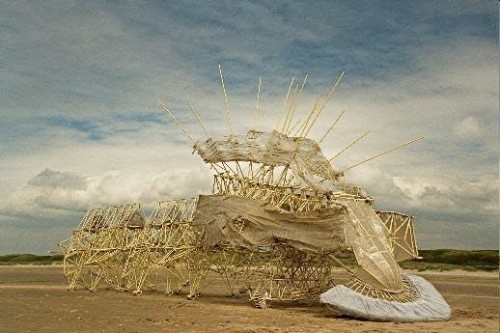
Strandbeest by Theo Jansen, courtesy of Gallerie Dennis Cooper
The Rumpus has a conversation with Banksy.
Here’s a Times article on testing Google’s new translation software (via Sara Faye Lieber’s facebook).
Jezebel has a sympathetic Q&A with a guy with a female-constipation fetish (believe it or not, this is actually SFW).
Julia Cohen posts poems by her 4th and 5th grade students.
Ron Rosenbaum, who you probably know better as Slate‘s resident Nabokov-obsessive, reviews Seth Rogov’s Bob Dylan: Prophet, Mystic, Poet for the Jewish Review of Books. Depending on your personal feelings about Dylan, this piece is either about as much or slightly less fun than it sounds like.(via Arts & Letters Daily.)
And in today’s installment of BANJO FEEVER, we’ve got Frank Warner and Pete Seeger on Pete’s old RAINBOW QUEST TV show, doing Frank Proffitt’s “Tom Dooley.” This was the first bluegrass song I ever got obsessed with. The version that caught my attention was Doc Watson’s, from a live album that I picked up because I wanted to hear a “more authentic” version of “Shady Grove,” than the Jerry Garcia / David Grisman version on their album of the same name, which I was already in love with.
httpv://www.youtube.com/watch?v=OATZrTibcFY
Here is a Bunch of Things!
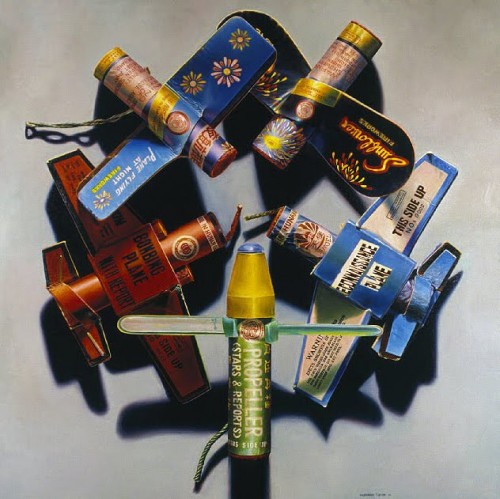
That’s right–many things; one bunch of them.
Faster Times books editor and commenter-in-good-standing-here Lincoln Michel takes on David Shields’s Reality Hunger over at The Rumpus. I have to say that Lincoln’s review is thorough, even-handed and thought-provoking; but after reading it, I can’t imagine anything I’m less interested in reading than this book. I say read Lincoln’s piece and call it a day.
Julia Cohen went to a small press festival in Boulder, CO. Then she ate some crappy pizza from a place called Sexy Pizza. She also talks about the new issues of Horse Less Review and Ugly Duckling’s 6×6. Plus, you know, other stuff–flowers, her brother, March.
Valleywag blows the pickles off the Cheezburger empire–sort of.
Also, Borders is firing lotsa people.
And what the hell has John Gallaher been talking about lately? Well, he likes the new Double Room, he’s interested in the new Sawako Nakayasu book from Letter Machine, he says the Laurel Review is looking for reviewers, and he digs the paintings of Glennray Tutor (see above), whom you know as the guy whose works adorns several of Barry Hannah’s Grove-Atlantic covers. Here’s Tutor’s site.
Mexican Getaway with Julia Cohen & Mathias Svalina
 All poetry power-couples should be required to have dueling(/dualing) blogs. As JC has mentioned on her blog before, her parents are retired to sunny Mexico, and so she and MS went down from Denver to spend the holidays in the not-snow. His slideshow is here. Hers are here, here, and here. Also, his new (debut full-length!) collection, Destruction Myth, and her chapbook, For the H in Ghost.
All poetry power-couples should be required to have dueling(/dualing) blogs. As JC has mentioned on her blog before, her parents are retired to sunny Mexico, and so she and MS went down from Denver to spend the holidays in the not-snow. His slideshow is here. Hers are here, here, and here. Also, his new (debut full-length!) collection, Destruction Myth, and her chapbook, For the H in Ghost.
Here are photos they took of each other.

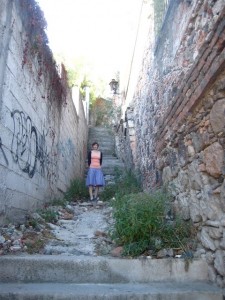
Oh, and here’s Mexico-

Good deal.
Happy Birthday, Julia Cohen!!!!
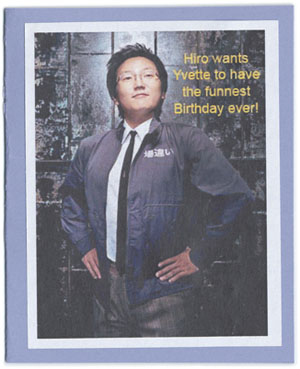
Dear Internet, it’s poet and blogger extraordinaire Julia Cohen‘s birthday today. How old is she turning? Not the issue. What’s important is that this is an opportunity to remember why we love Julia, and to avail ourselves of her work. We can read her poems at Web Conjunctions, Sawbuck, and Pilot. (We can find more links via her blog.) If we want to get her a present, we could buy one of her chapbooks- The History of a Lake Never Drowns, or, if we’re big spenders, When We Broke the Microscope (a collaboration with Mathias Svalina). We could also leave comments on her blog about how much we’re looking forward to the five–five–chapbooks she’s got forthcoming, including For the H in Ghost, which I single out here because I read it (or some version of it) in manuscript, and so am excited for all of you to discover it. HAPPY BIRTHDAY JULES.
The Life-Affirmier side of Rant
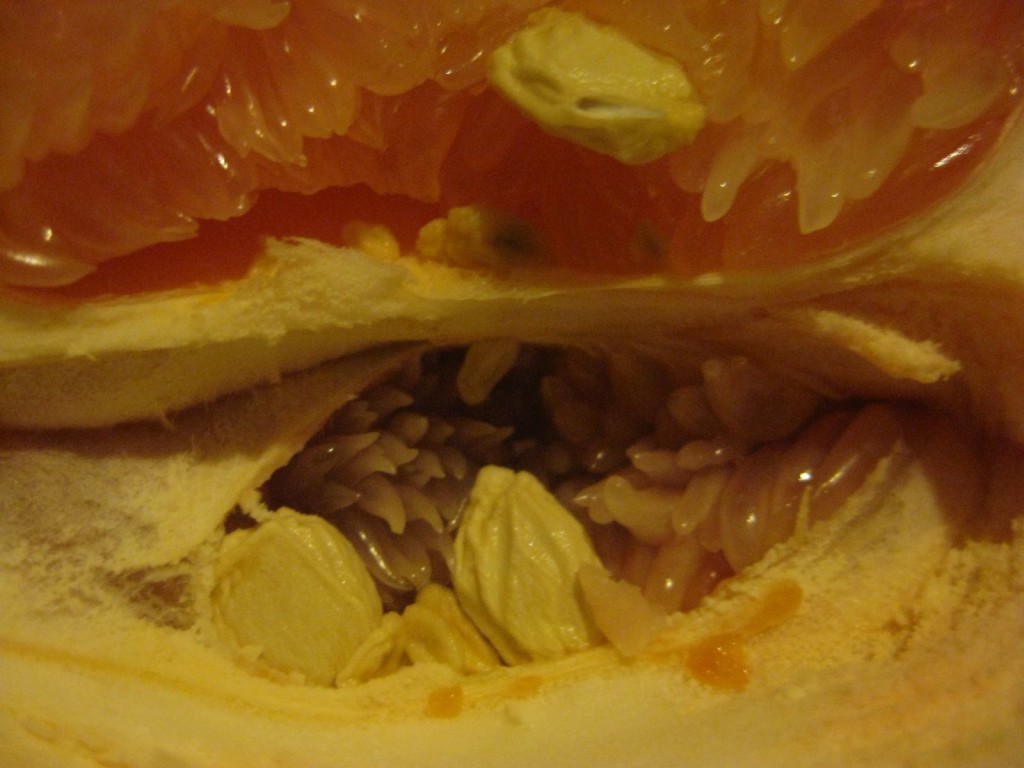
the gooey, somewhat sexual insides of this grapefruit are like the gooey, somewhat sexual insides of all our hearts. Photo (c) Julia Cohen.
Regular readers of this blog know that Julia Cohen is a frequent target of my admiration, but she gets special attention today for this awesome blog post, which starts off with portents of a not-good-news confession, then quickly becomes an apocalyptic screed, and then somehow finds itself soaring into an affirmation of why we all participate in the conversation of Arts & Letter, as well as a sort of declaration of her personal poetics and an expression of gratitude and thanks “to everyone who works in a creative medium.” Then to really round things out, there are two pictures of a bed designed to look like a cheeseburger. Anyway, you should take a minute and now and go read the whole post, which packs a lot of heart into a not-a-whole-lot of space, but here’s my favorite part:
Reading experimental poetry, listening to music, seeing a film or an art show, or reading theory that puts something in this world that is beautiful, constructive, advances dialog and new avenues of understanding- these are the moments that make me feel we, as humans, can provide something positive that would not exist on this planet without us. That’s the glow. For poetry, I’m intrigued by work that dismantles and then plays with the un-gendered “I,” that explores new forms of address, reckoning, and evinces culpability for the human and non-human other. Through new communication via what some may call anti-narrative, the links between fragmented image, quiet but firm declarations, and the transitive property of memory in complimenting and translating subjective experience to an other. Works that are about inclusive resistance and inclusive revolt, that emanate a destabilizing yet regenerative force, that may on the surface look surreal though are anything but.
I think it’s fascinating that one of the most talented, compelling and elusive poets I know (or know of) should somehow come to produce some of her most nakedly earnest and straightforward utterances in the course of articulating the value of art that fragments, challenges, “dismantles” or otherwise subverts conventional notions of narrative and meaning. This paradox seems, to me at least, to be exactly the point.
*****SPECIAL JULIA COHEN BONUS SECTION*******
Remember last week, when I liked Cohen’s chapbook, The History of a Lake Never Drowns ?
Three of her poems in diode v1n3
Cohen co-edits Saltgrass, which has a new issue (#3) out, which I’ll probably blog about at some point in the future, probably about two days after whenever she gives me a copy of it.

Cohen at the KGB Bar, with Paige Taggart (left), 10/08. Photo (c) Star Black.
The History of a Lake Never Drowns
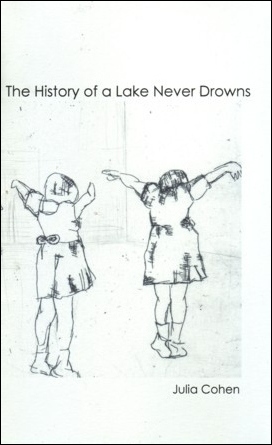
Julia Cohen is a frequent target of admiration on this here blog, and now we’ve got her in our sights again. She has a new chapbook out from Dancing Girl Press, which, as you’ll see when you click through, for a measly $7 includes shipping, so it’s an extra good deal. If you don’t know JC’s work, you can start at her blog and then go from there, but I also cajoled her into giving me a few sample poems from the chappie, which you can find just below the fold.
Home Video Review of Books, Vol 1, Issue 2 now live!
by Julia Cohen & Mathias Svalina. This issue has home video reviews of:
Kim Hyesoon’s Mommy Must Be a Fountain of Feathers
Lisa Jarnot’s Night Scenes
Dan Machlin’s Dear Body
Brett Price’s Trouble with Mapping
John Taggart’s There are Birds
Ara Shirinyan’s Your Country Is Great
Brandon Shimoda’s The Alps
Joel Chace’s Matter No Matter
Jon Godfrey’s City of Corners
Jen Tynes’s Heron / Girlfriend
Anne Heide’s Wiving
Anne Boyer’s Art is War
Darcie Dennigan’s Corinna A-Maying the Apocalypse
Allison Carter’s Shadows are Weather
Mark Cunningham’s Body Language


